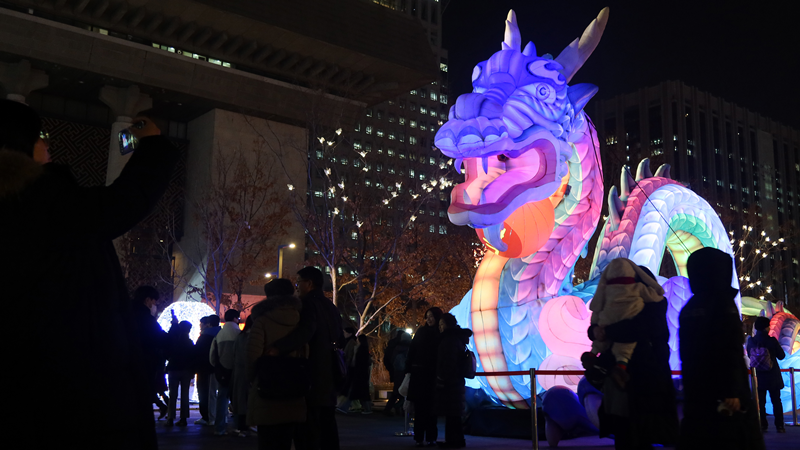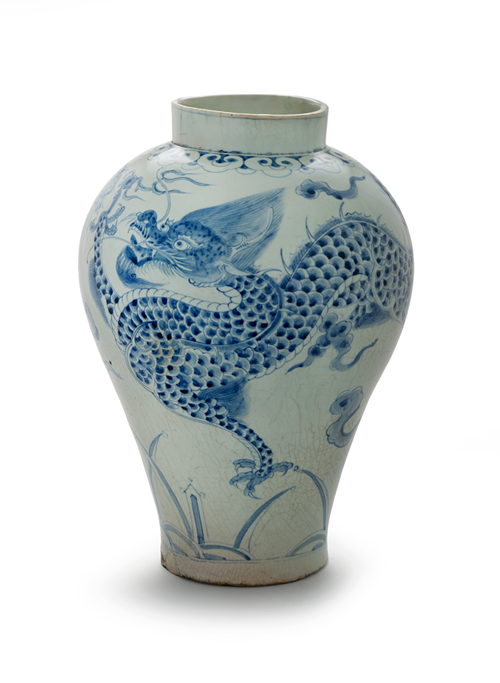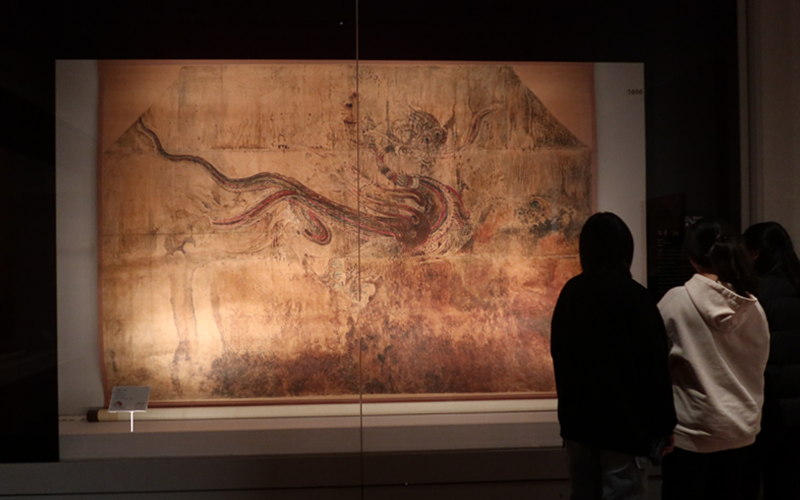
A large blue dragon figure made of Hanji (traditional paper) is displayed at Gwanghwamun Square in downtown Seoul's Jongno-gu District to mark the arrival of 2024. (Lee Jun Young)
By Hong Angie
A distinct animal marks each year in Korea under the Asian zodiac. Since the Unified Silla period (676-935), the 12 zodiac signs -- the mouse, ox, tiger, rabbit, dragon, snake, horse, goat, monkey, rooster, dog and pig -- symbolize each year in that order as the criterion for predicting the given year's fortunes and exchanging good wishes.
2024 is gabjinnyeon (Year of the Blue Dragon), the 41st year of the 60-year cycle. Gab (yang or blue) is one of the 10 Heavenly Stems marked by the color blue. Jin refers to "dragon," and thus this year marks the Year of the Blue Dragon.
The stems are formed by combining the five elements of wood, fire, earth, metal and water with the two opposing forces of yin and yang.
As the only imaginary animal among the 12 in the zodiac, the dragon is said to have the head of a camel, antlers of a deer, eyes of a rabbit, ears of an ox, neck of a snake, belly of a frog, scales of a carp, claws of a hawk and feet of a tiger.
Like the Korean proverb "The cloud follows the storm and the dragon follows the cloud," the dragon symbolized both rain and water as the god of both. Koreans in ancient times prayed to dragons for the water they needed for agriculture or to catch fish in the sea.
The dragon also symbolized strong force. The king's face was called yongan, which literally translates to "dragon face," and his clothes, belt and chairs had dragon designs.
As one of the four guardians of north, south, east and west, the blue dragon protects the east and its symbols were used in the tombs of the Goguryeo Dynasty (37 B.C.-A.D. 668) and Baekje Kingdom (18 B.C.-660 A.D.). The creature is also seen on the ceilings of Heunginjimun (Dongdaemun) Gate in Seoul's Jongno-gu District and Sungnyemun (Namdaemun) Gate in Jung-gu District.
Among the approximately 100,000 registered regional names nationwide, 4,109 (4.1%) are related to the 12 zodiac animals, according to data from the National Geographic Information Institute in 2021. Among the latter, those related to the dragon were the most common with 1,261.

The exhibition "The Blue Dragon" runs through March 3 at the National Folk Museum of Korea in Seoul's Jongno-gu District. This 18th-century white porcelain vase from the Joseon Dynasty features a cloud and a blue dragon. (National Folk Museum of Korea)
Seoul is hosting exhibitions to promote the dragon's symbolism and significance to mark gabjinnyeon.
Through March 3, the National Folk Museum of Korea in the capital's Jongno-gu District holds the exhibition "The Blue Dragon." An 18th-century blue-and-white porcelain vase from the Joseon Dynasty with a cloud and a blue dragon, paintings of dragons and clouds, woodblocks engraved with dragon images and others show the meanings of the mythical creature throughout the nation's history.
Another section allows visitors to see Cheongnyong (Blue Dragon) Train, Korea's first rollercoaster opened to the public on May 5, 1973, at Children's Grand Park in the city's Gwangjin-gu District.
The National Museum of Korea in Seoul's Yongsan-gu District until April 7 runs the exhibition "Finding Dragons at the Museum." Displayed are 15 dragon-related works including a painting of a blue dragon on Gangseodaemyo (Gangseo Great Tomb) from the Goguryeo era, another of a dragon and clouds from the Joseon period in the 19th century, and a white porcelain with blue designs of a dragon and clouds from the late 18th century.

The exhibition "Finding Dragons at the Museum" runs through April 7 at the National Museum of Korea in Seoul's Yongsan-gu District. Shown on Dec. 27 is a painting of a blue dragon on Gangseodaemyo (Gangseo Great Tomb) from the Goguryeo Dynasty (37 B.C.-A.D. 668). (Hong Angie)
shong9412@korea.kr